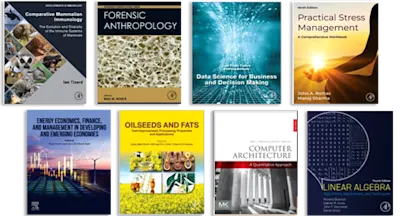
Damage Mechanics for Laminated Composites
- 1st Edition - January 1, 2026
- Imprint: Elsevier
- Author: Shuguang Li
- Language: English
- Paperback ISBN:9 7 8 - 0 - 4 4 3 - 3 1 5 6 6 - 4
- eBook ISBN:9 7 8 - 0 - 4 4 3 - 3 1 5 6 7 - 1
Damage Mechanics for Laminated Composites outlines commonly encountered damage mechanisms and failure modes in laminated composites and provides strategies for avoiding them.… Read more
Purchase options

Damage Mechanics for Laminated Composites outlines commonly encountered damage mechanisms and failure modes in laminated composites and provides strategies for avoiding them. The book primarily analyzes two types of damage commonly observed in laminated composites, transverse matrix cracking and delamination, and is divided into 3 sections, the first providing an introduction to the topic, covering the stress-strain relationship, thermodynamics, material categorization, common experimental observations, laminate theory, and the generalized plan strain problem. The second section discusses transverse matrix cracking, including subjects such as cracked laminate analysis, Hashin’s analysis, shear lag, the ply-discount technique, continuum damage mechanics, and the effects of viscosity. The third section analyzes delamination, including energy release rates, delamination modeling, and Abaqus models, and the book concludes with a discussion of progressive failure analyses and future developments.
- Outlines the various damage mechanisms and failure modes common in laminated composites and provides guidance for how to avoid them
- Details computational models and experimental methods for testing and characterizing the mechanical properties of laminated composites
- Applies modern composite failure theories to structural design of composite structures
Engineers, designers and researchers, including PhD students and senior undergraduates and postgraduates working on their research projects, in the field of composite materials and structures in engineering sectors, such as aerospace , mechanical, civil, chemical and offshore
Part I Basic Consideration
1. Introduction to Damage Mechanics for Laminated Composites
2. Constitutive Relationship for Anisotropic Elastic Materials
3. Nonlinearity in the In-Plane Shear Behavior of Unidirectionally Fibre-Reinforced Composites
4. Laminate Analyses
5. The Generalized Plane Strain Problem
Part II Transverse Matrix Cracking
6. Introduction to Cracked Laminate Analysis
7. Different Cracked Laminate Analyses
8. Continuum Demage Mechanics (CDM)
9. Effects of Viscosity
Part III Delamination
10. Introduction to Delamination
11. Evaluation of Energy Release Rates
12. Delamination Modeling Through Cohesive Zone Model
13. Abaqus Model
14. Various Subtleties in Delamination Models
Part IV: Other Developments
15. Progressive Failure Analyses in Laminated Composites
16. Future Developments and Outlook for Damage Mechanics in Laminated Composites
1. Introduction to Damage Mechanics for Laminated Composites
2. Constitutive Relationship for Anisotropic Elastic Materials
3. Nonlinearity in the In-Plane Shear Behavior of Unidirectionally Fibre-Reinforced Composites
4. Laminate Analyses
5. The Generalized Plane Strain Problem
Part II Transverse Matrix Cracking
6. Introduction to Cracked Laminate Analysis
7. Different Cracked Laminate Analyses
8. Continuum Demage Mechanics (CDM)
9. Effects of Viscosity
Part III Delamination
10. Introduction to Delamination
11. Evaluation of Energy Release Rates
12. Delamination Modeling Through Cohesive Zone Model
13. Abaqus Model
14. Various Subtleties in Delamination Models
Part IV: Other Developments
15. Progressive Failure Analyses in Laminated Composites
16. Future Developments and Outlook for Damage Mechanics in Laminated Composites
- Edition: 1
- Published: January 1, 2026
- Imprint: Elsevier
- Language: English
SL
Shuguang Li
Shuguang Li is a Professor of Aerospace Composites at the Institute for Aerospace Technology, Faculty of Engineering, University of Nottingham, UK. He obtained his PhD from the University of Manchester in 1993 and returned to his academic track as a lecturer at the University of Manchester in 1995 and was appointed to his present position in 2012. Professor Li has published well over 100 academic papers, most of them in highly reputable international journals. His main research interest is in the area of analysis of composite materials and structures, in particular, on modelling damage and failure, micromechanics and material characterisation. As an outcome of his research on micromechanical modelling of composites, a piece of software UnitCells© has emerged which offers material scientists and structural designers a useful tool for characterisation of composites in terms of effective elastic properties as well as strength properties.
Affiliations and expertise
Professor of Aerospace Composites, Institute for Aerospace Technology, Faculty of Engineering, University of Nottingham, UK